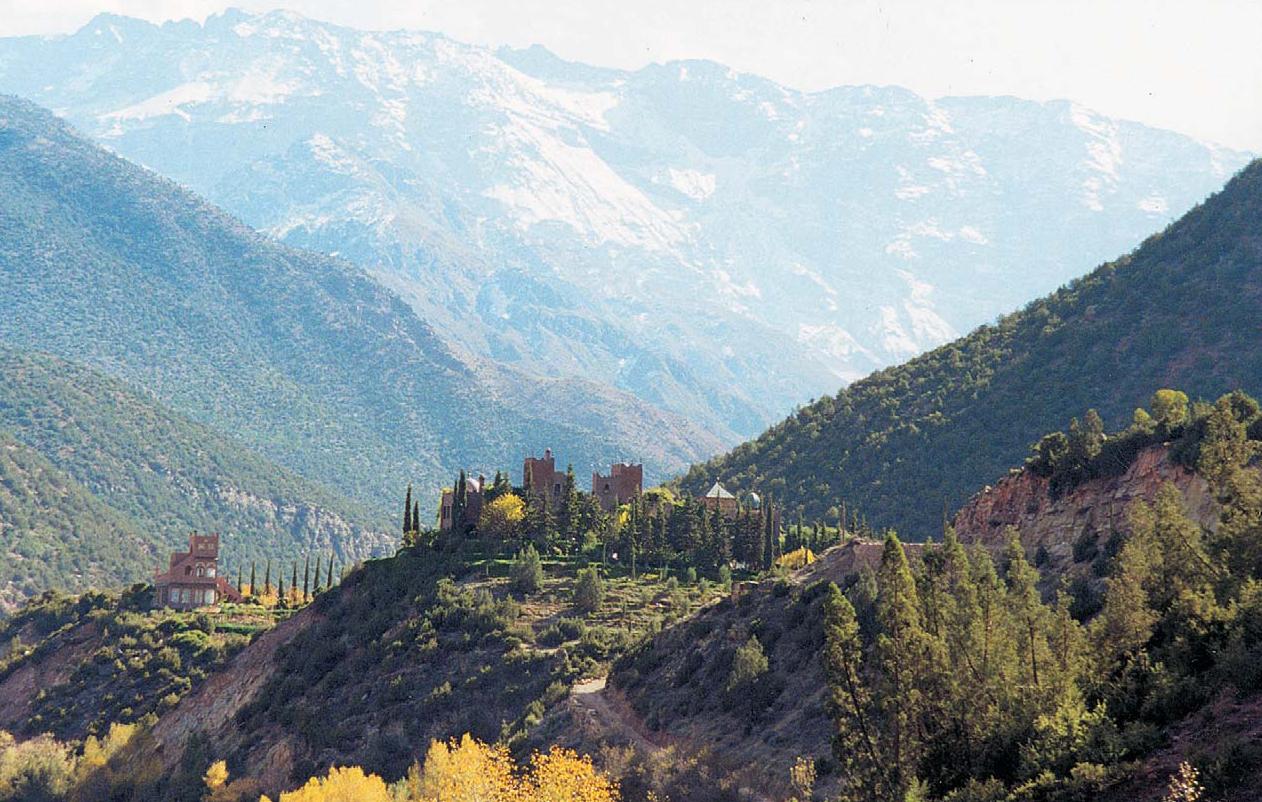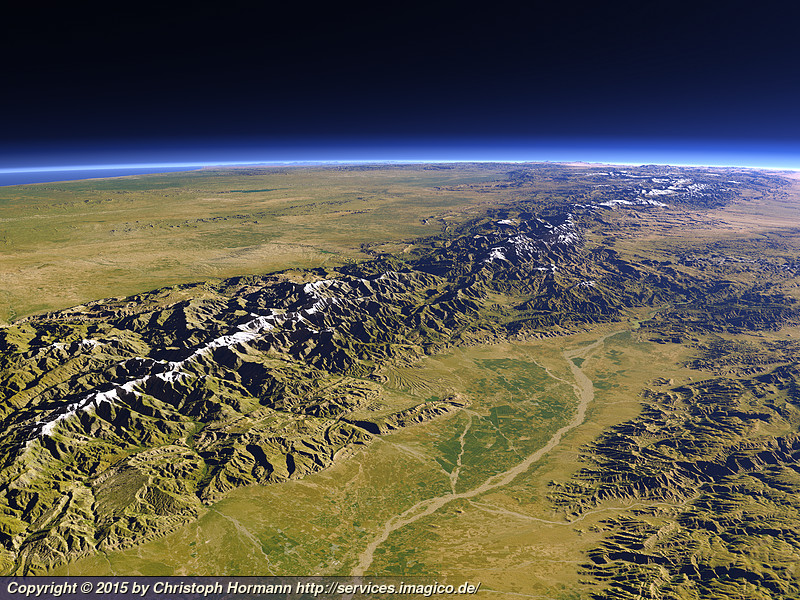

Jbel Toubkal lies in the Toubkal national park, which was created in 1942. Its high point is the Jbel Toubkal, which is visible from the city of Marrakech. In the west lies the oldest portion of the range. This portion of High-Atlas is very similar to the Rocky Mountains in the western United States. In addition, some localized valleys supplied by irrigation make agriculture possible. It extends southward from the steppe lands into rocky desert. These regions are marked by variations in temperatures.
Continental semi-arid or steppe climate, and is present in the southern part of the Central High Atlas, from Toubkal to Imilchil, and the whole Oriental High-Atlas down of Imilchil. However, these forests are declining because of the reducing of annual precipitation, over-exploitation of the trees (used for construction and heating), and sheep-goat overgrazing. These conditions allow the existence of pine, oak and cedar forests. Important rivers flow through the valleys (including Asif Melloul, Oued n'Fis, and Oued Tessaout) supply the fertile basins like Aït Bou Guemez and Imilchil. Snow falls between November and April, but can persist from September to June in the peaks. The drought in the summer months, interrupted by thunderstorms, is usually intense. The annual rainfall is between 600 and 1,000 mm (24 and 39 in). These regions are relatively humid with irregular precipitations but occasionally torrential. Oceanic climate, dominates the north and south of the Western High Atlas until ( Jbel Toubkal), as well as the northern part of Central High Atlas from Jbel Toubkal until Imilchil, owing to their exposition to the perturbations coming from the North Atlantic Ocean. There are two types of Alpine Climates in the High Atlas: Many scientists, particularly French scientists, make yearly expeditions to observe the community and their living system. This technique has intrigued many Western agriculturalists, in which they were impressed by the high efficiency of this agricultural system. They turn the rather semi-arid lands into fertile valleys called locally by Agdal (garden in Berber). In the steppe zone of the High-Atlas, where precipitations are low, the locals created a smart technique in managing the low precipitations and the weak soil. The High-Atlas Mountains are inhabited by Berbers, who live from agriculture and pastoralism in the valleys. A number of wadis and seasonal rivers terminate in the deserts to the south and plateaux to the east of the mountains. 
The majority of the year-round rivers flow to the north, providing the basis for the settlements there. The High Atlas forms the basins for a multiplicity of river systems. On the Western High Atlas, there is Oukaïmeden, one of three main ski stations in Morocco.

Snow lasts well into late spring in the High Atlas, mostly on the northern faces of the range. In the higher elevations of the massif, snow falls regularly, allowing winter sports. The range serves as a weather system barrier in Morocco running east–west and separating the Sahara from the Mediterranean and continental zones to the north and west. The range includes Jbel Toubkal, which at 4,167 m (2.589 mi 13,671 ft) is the highest in the range and lies in Toubkal National Park. To the north, in the direction of Marrakech, the range descends less abruptly. At the Atlantic and to the southwest the range drops abruptly and makes an impressive transition to the coast and the Anti-Atlas range. The High Atlas rises in the west at the Atlantic Ocean and stretches in an eastern direction to the Moroccan- Algerian border. High Atlas, also called the Grand Atlas ( Arabic: الأطلس الكبير, romanized: Al-Aṭlas al-Kabīr French: Haut Atlas Tachelhit: ⴰⴷⵔⴰⵔ ⵏ ⴷⵔⵏ Adrar n Dern), is a mountain range in central Morocco, North Africa, the highest part of the Atlas Mountains.







 0 kommentar(er)
0 kommentar(er)
